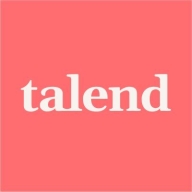

SnapLogic and Talend Open Studio are two competing products in the data integration market. SnapLogic has the upper hand in pricing and customer service, while Talend Open Studio offers a more robust feature set that attracts users looking for more functionality.
Features: SnapLogic is known for its cloud-based platform designed for rapid deployment and scalability, offering strong data integration and predictive analytics capabilities. It is highly favored by businesses needing quick implementations for their cloud-native workloads. Talend Open Studio, on the other hand, is recognized for its open-source model providing comprehensive tools for data integration, data quality, and big data. Its flexibility and customization options are particularly valuable for complex data needs.
Room for Improvement: SnapLogic could enhance its offering by expanding its customization features and addressing the technical expertise required for more complex use cases. Users have also suggested that improving the pricing model could attract a broader customer base. Talend Open Studio might benefit from streamlining its deployment process, as it currently requires significant technical expertise. Improving its cloud-native features and customer support could also increase its appeal against competitors.
Ease of Deployment and Customer Service: SnapLogic focuses on a fast deployment process and provides excellent customer support owing to its cloud-native infrastructure, which leads to higher user satisfaction. In contrast, Talend Open Studio requires more technical support due to its open-source nature, which can challenge those without the necessary resources or expertise, although its customization capabilities are appreciated by those equipped to manage them.
Pricing and ROI: SnapLogic operates on a subscription-based model with higher initial costs, but it often delivers a quick return on investment thanks to its scalable and efficient cloud solutions. Talend Open Studio offers a more cost-effective starting point due to its open-source base, appealing to users who prioritize flexibility and a competitive price point. The open-source model allows users to control costs while benefiting from extensive capabilities for integration tasks.
| Product | Market Share (%) |
|---|---|
| Talend Open Studio | 3.2% |
| SnapLogic | 1.1% |
| Other | 95.7% |


| Company Size | Count |
|---|---|
| Small Business | 11 |
| Midsize Enterprise | 5 |
| Large Enterprise | 10 |
| Company Size | Count |
|---|---|
| Small Business | 22 |
| Midsize Enterprise | 13 |
| Large Enterprise | 18 |
The SnapLogic Intelligent Integration Platform uses AI-powered workflows to automate all stages of IT integration projects – design, development, deployment, and maintenance – whether on-premises, in the cloud, or in hybrid environments. The platform’s easy-to-use, self-service interface enables both expert and citizen integrators to manage all application integration, data integration, API management, B2B integration, and data engineering projects on a single, scalable platform. With SnapLogic, organizations can connect all of their enterprise systems quickly and easily to automate business processes, accelerate analytics, and drive transformation.
Talend Open Studio is a free, open source ETL tool for data integration and Big Data. The solution enables you to extract diverse datasets and normalize and transform them into a consistent format which can be loaded into a number of third-party databases and applications.
Talend Open Studio Features
Talend Open Studio has many valuable key features. Some of the most useful ones include:
Talend Open Studio Benefits
There are several benefits to implementing Talend Open Studio. Some of the biggest advantages the solution offers include:
Reviews from Real Users
Below are some reviews and helpful feedback written by PeerSpot users currently using the Talend Open Studio solution.
Elio B., Data Integration Specialist/CTO at Asset messages, says, "The solution has a good balance between automated items and the ability for a developer to integrate and extend what he needs. Other competing tools do not offer the same grade of flexibility when you need to go beyond what is provided by the tool. Talend, on the other hand, allows you to expand very easily."
A Practice Head, Analytics at a tech services company mentions, “The data integration aspect of the solution is excellent. The product's data preparation features are very good. There's very useful data stewardship within the product. From a technical standpoint, the solution itself is pretty good. There are very good pre-built connectors in Talend, which is good for many clients or businesses, as, in most cases, companies are dealing with multiple data sources from multiple technologies. That is where a tool like Talend is extremely helpful.”
Prerna T., Senior System Executive at a tech services company, comments, “The best thing I have found with Talend Open Studio is their major support for the lookups. With Salesforce, when we want to relate our child objects to their parent object, we need to create them via IDs. Then the upsert operation, which will allow you to relate a child object to the event, will have an external ID. That is the best thing which keeps it very sorted. I like that.”
An Implementation Specialist, Individual Contributor at a computer software company, states, “I can connect with different databases such as Oracle Database or SQL Server. It allows you to extract the data from one database to another. I can structure the data by filtering and mapping the fields.” He also adds, “It is very user-friendly. You need to know the basics of SQL development or SQL queries, and you can use this tool.”
PeerSpot user Badrakh V., Information System Architect at Astvision, explains, "The most valuable features are the ETL tools."
We monitor all Data Integration reviews to prevent fraudulent reviews and keep review quality high. We do not post reviews by company employees or direct competitors. We validate each review for authenticity via cross-reference with LinkedIn, and personal follow-up with the reviewer when necessary.